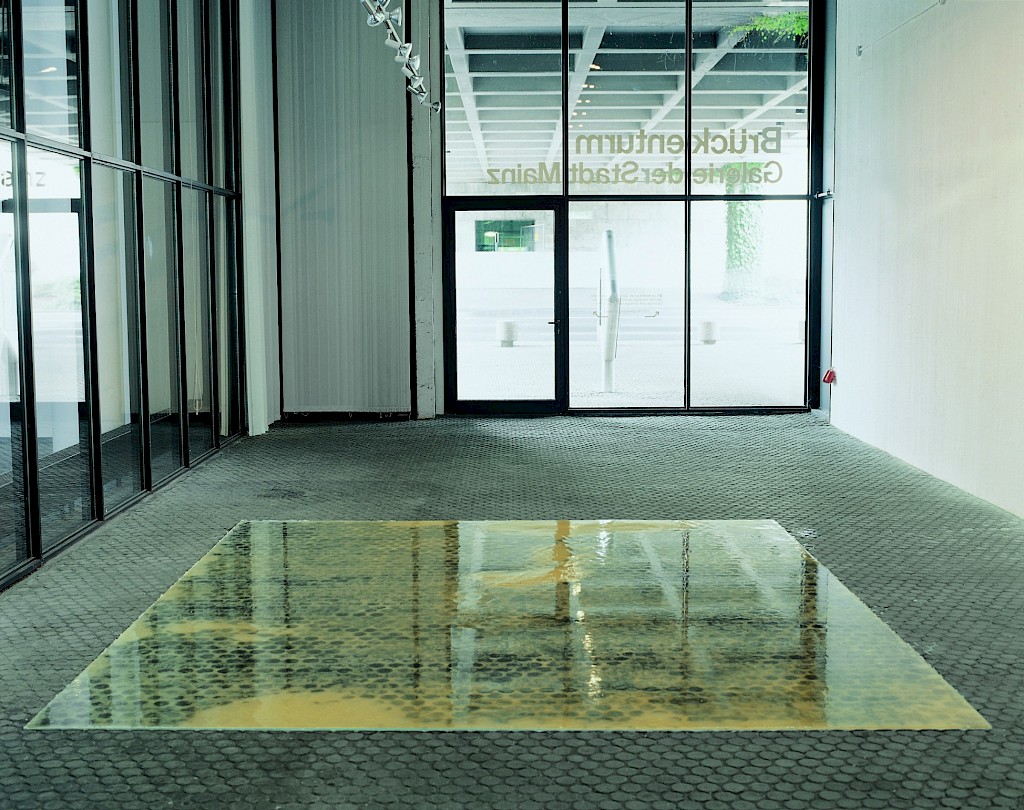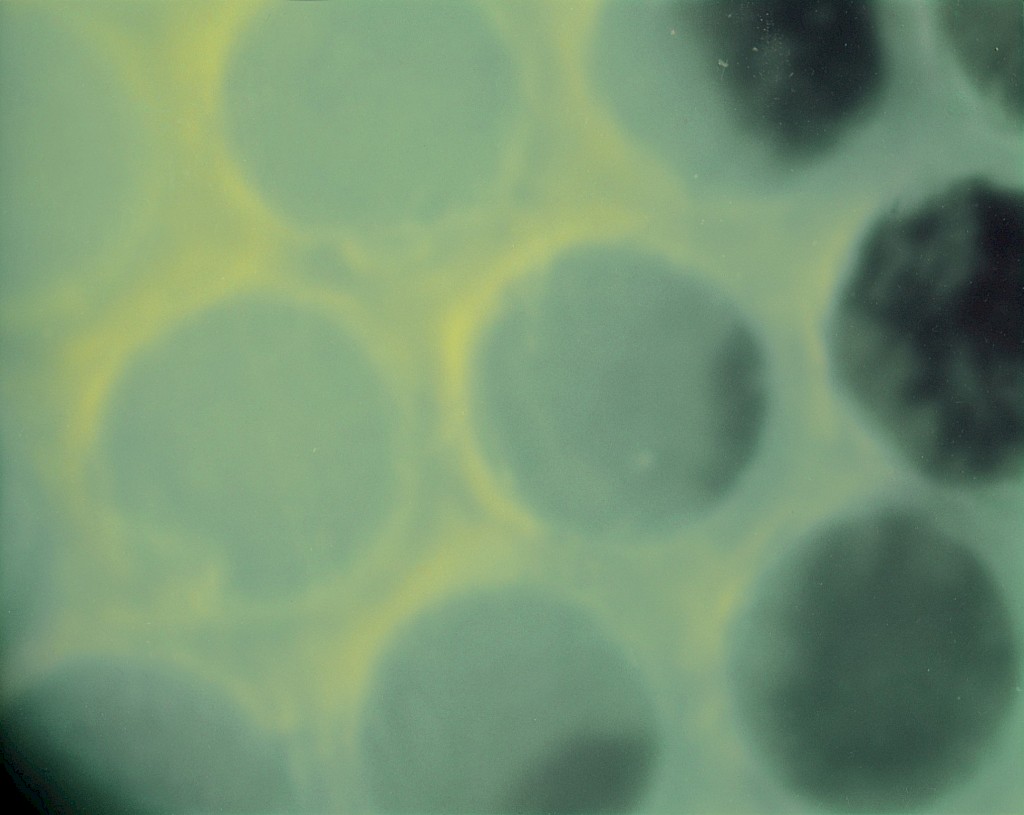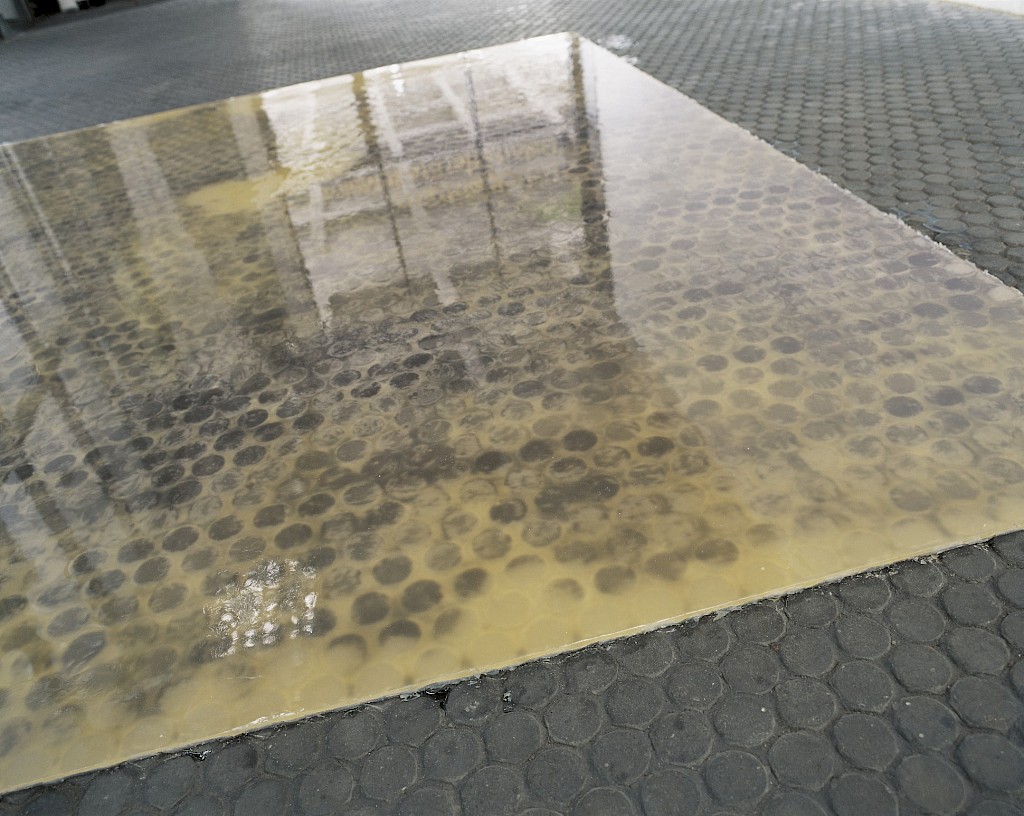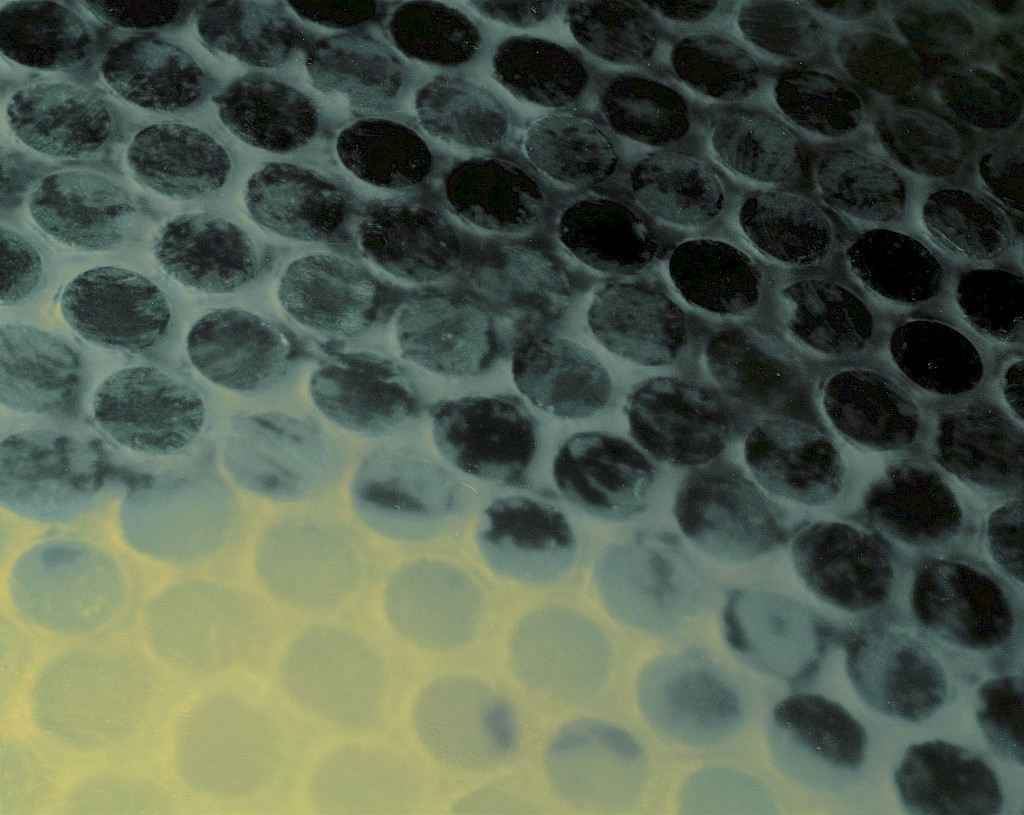orten
2000 Installation Brückenturm | Galerie der Stadt Mainz
Transparency
Water is much like fire, in that it magically attracts our gaze, drawing attention instinctively towards itself – not least of all by virtue of the danger that lurks in fire and in water, the unfathomable medium.
The Galerie der Stadt Mainz stands beneath a concrete bridge on a wide, heavily travelled street in what appears to be a no-man’s land between the busy shopping district and the world of the City Hall and a multi-purpose arena and concert hall. Were the Galerie not closed off front and back by glass facades, this would be a loud, draughty, unpleasant site. The lower level is not actually visually separated from the outdoor transit area. The window facades extend to ground level and offer a view of the dull, grey ambience in which the same pattern of six-cornered paving stones is extended.
The room itself is an elongated rectangle in which Haypeter marks out the area of a shorter, thicker rectangle with a layer of poured epoxy resin. He liberates this section of the floor from its unpretentious facelessness and attracts our attention to the field. The surface shines in contrast to the dull stones and is transparent. We look at the underlying pattern of stones as if through a pool of water.
The transparency of the epoxy resin material depends largely upon its thickness but is also influenced by the surface on which it is poured and hardens at different speeds. Several different chemical processes come to light in the visual manifestation of this actually homogeneous material.
The transparency of the works in Bonn, Zweckel, Mannheim and Mainz makes the boundary zone between floor and space visible to the viewer. One might speak of a floor skin or, viewed from the opposite perspective, of an outer spatial boundary, both of which remain visible by virtue of the transparency of the surface areas.
Art always involves a process in which we become aware of our perceptions. Werner Haypeter succeeds with his installations in creating a new experience of the places at which they are located, in directing our attention to visual phenomena that would otherwise have remained beyond the reach of our attention. Yet at the same time his works evoke a sense of the dimensional relationships of these spaces and of the intervals between the room as an enclosing place and the flat surface as the place enclosed.
(1) Cf. Bussi Buhs (ed.), Kunststoff als Kunst Stoff, exh. cat., Munich, 1998. It should also be noted, however, that Claes Oldenburg and other Pop Artists also created quite convincing works in plastic.
(2) Translated from José Maria Arguedas, Die tiefen Flüsse, Cologne, 1980, p. 14 (title of the original 1958 Spanish edition: Los rios profundos).
[Text: Thomas Köllhofer: Zwischenorte in: »orten« (Ausst.-Kat., Brückenturm | Galerie der Stadt Mainz), Mainz 2000, S. 18 und 24. Translated by John Southard]





